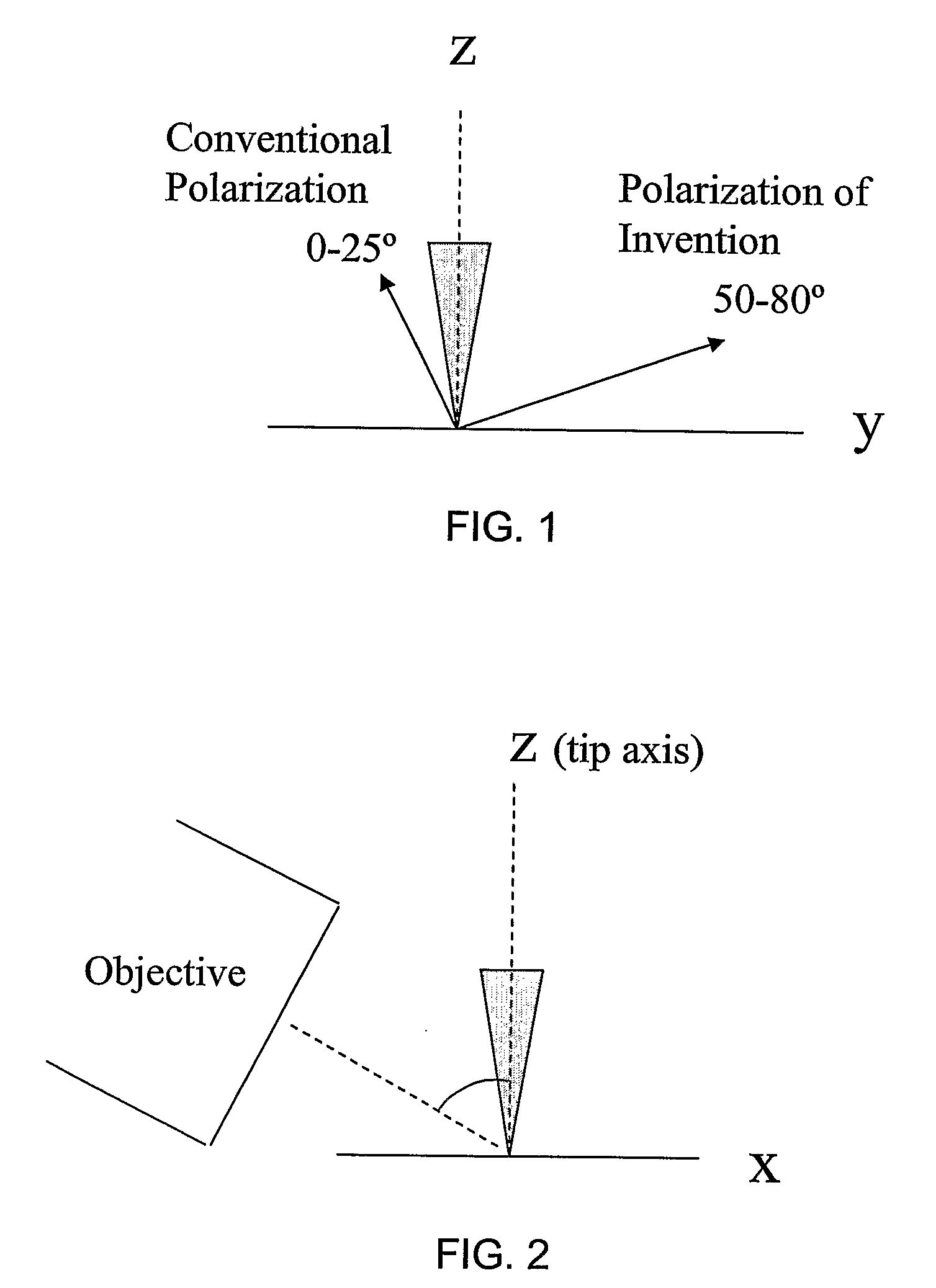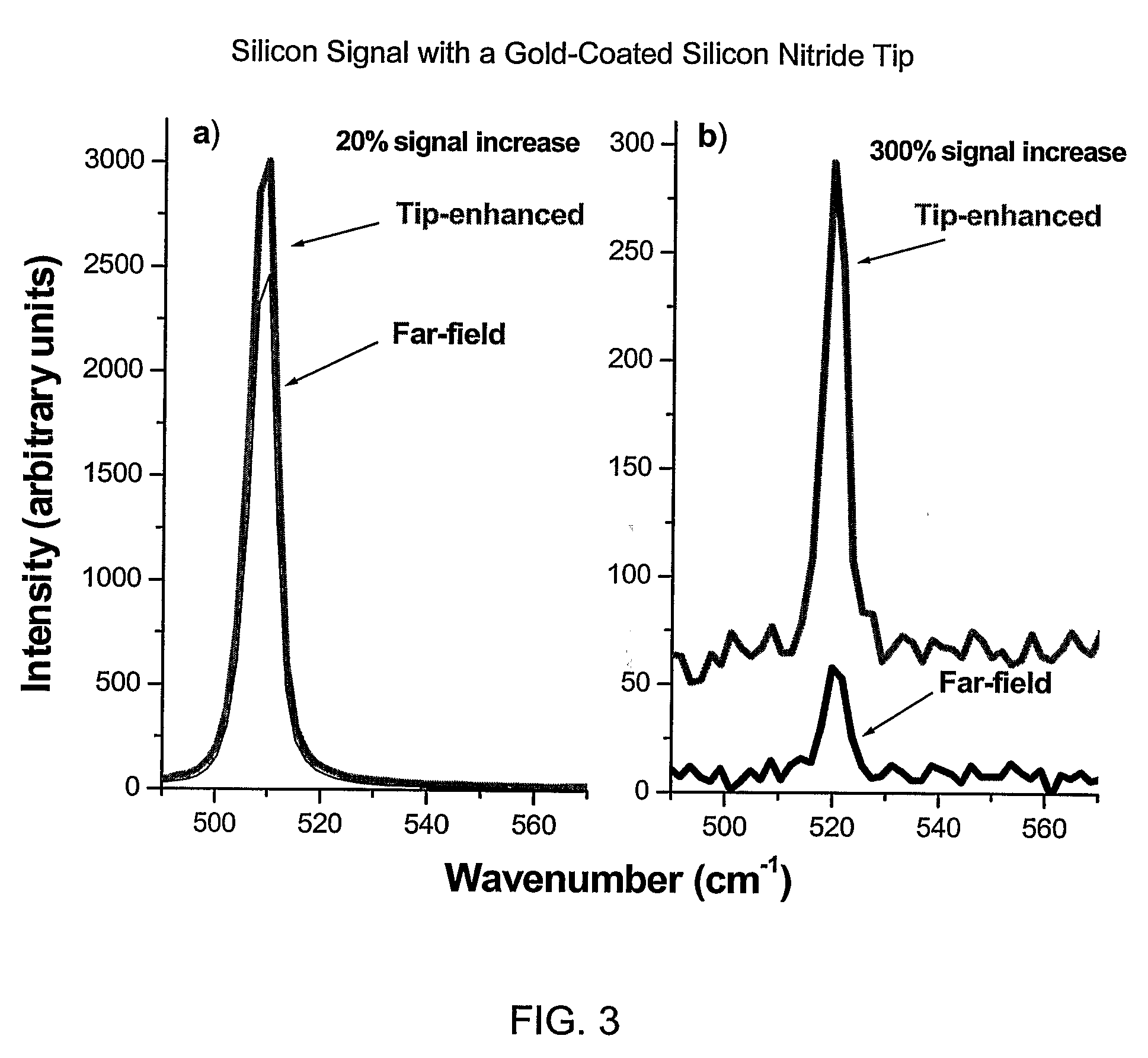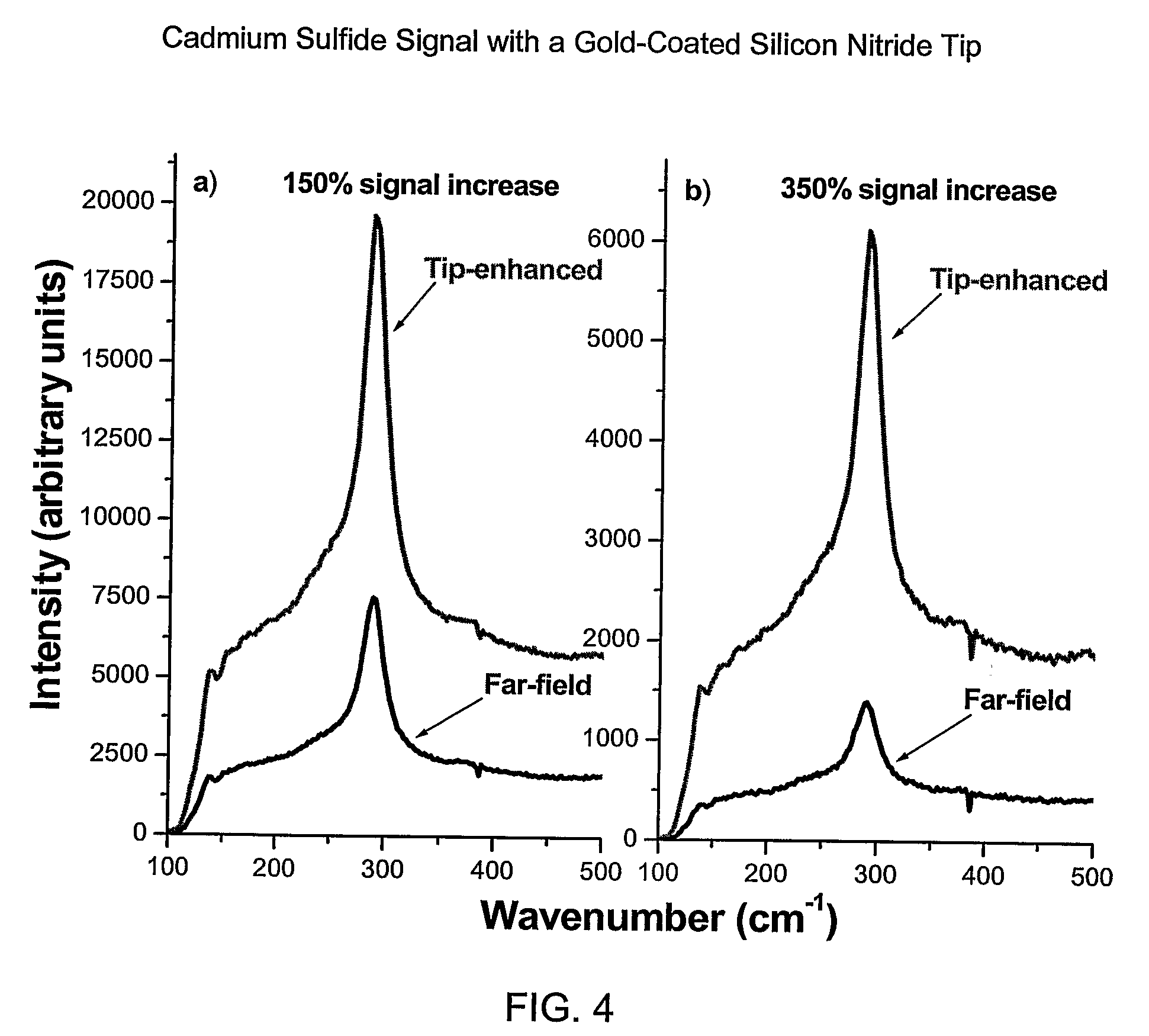High Contrast Tip-Enhanced Raman Spectroscopy
a raman spectroscopy and high contrast technology, applied in the field of spectroscopy, can solve the problems of small contrast insufficient scanning ter, drastic increase in measurement time, and decrease in measurement accuracy, and achieve the effect of enhancing the contrast-ratio
- Summary
- Abstract
- Description
- Claims
- Application Information
AI Technical Summary
Benefits of technology
Problems solved by technology
Method used
Image
Examples
Embodiment Construction
[0020]The present invention relates generally to the field of spectroscopy, and more particularly to tip-enhanced Raman spectroscopy that provides an enhanced contrast-ratio of a near-field Raman signal to a background signal. The near-field Raman signal is captured from a small volume of material near a metal-coated tip thereby achieving submicron lateral resolution.
[0021]Certain terminology is used herein for convenience only and is not to be taken as a limitation on the present invention.
[0022]The contrast ratio is the ratio of the near-filed signal (total signal minus the far-field signal) to the far-field signal and can be represented mathematically as: C=Inear / Ifar≈(Itotal−Ifar) / Ifar=Itotal / (Ifar−1), where I is the signal intensity. To achieve the desired contrast ratio, the enhancement factor of the tip is to be maximized, the far-field intensity is to be minimized, or a combination of both. The enhancement factor refers to the increase in near-field Raman signal due to metal...
PUM
| Property | Measurement | Unit |
|---|---|---|
| angle | aaaaa | aaaaa |
| angle | aaaaa | aaaaa |
| orientation angle | aaaaa | aaaaa |
Abstract
Description
Claims
Application Information
 Login to View More
Login to View More - R&D
- Intellectual Property
- Life Sciences
- Materials
- Tech Scout
- Unparalleled Data Quality
- Higher Quality Content
- 60% Fewer Hallucinations
Browse by: Latest US Patents, China's latest patents, Technical Efficacy Thesaurus, Application Domain, Technology Topic, Popular Technical Reports.
© 2025 PatSnap. All rights reserved.Legal|Privacy policy|Modern Slavery Act Transparency Statement|Sitemap|About US| Contact US: help@patsnap.com



